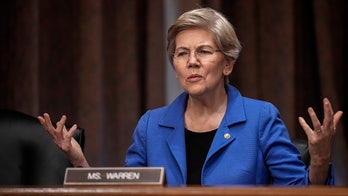Controversy and confusion over nuclear deal
Discrepancy between U.S., Iran over what was agreed to
Despite the highly touted Iranian nuclear deal announced by the Obama administration over the weekend, the two sides still can't seem to agree on what it is they agreed to.
The aftermath of the deal struck early Sunday in Geneva has been marked by confusion. According to Iranian media, the country's Foreign Ministry is now claiming that the White House put out an invalid fact sheet about the agreement.
A ministry spokeswoman called it a "one-sided interpretation of the agreed text," and said parts of it "contradict" the actual plan, according to Fars News Agency.
The Foreign Ministry did not specify what language might have clashed with their interpretation of the agreement, but called the White House statement a "modified version of the deal" -- and released their own version of the plan.
That document, among other distinctions, recognizes Iran's "right to nuclear energy for peaceful purposes," something the White House statement does not mention.
That appears to be one lingering sticking point between the two countries. Immediately after the deal was announced, Iranian officials were claiming that the agreement both recognized their right to enrich uranium and took military force off the table.
Speaking on CBS' "Face the Nation" on Sunday, Secretary of State John Kerry disputed both claims, calling them "not accurate."
A White House official said Wednesday that the United States does not recognize a "right to enrich," but President Obama does think the Iranian people "should have access to nuclear energy for peaceful purposes."
"However, the history of the Iranian nuclear program has raised serious and legitimate concerns in the international community as to whether Iran's enrichment program -- which it pursued in secret -- is truly for peaceful purposes," the official said.
The official said the short-term deal will provide a window to see if Iran can pursue a restricted and monitored civilian nuclear program, but: "The first step requires agreement on all aspects of the comprehensive solution. Nothing is agreed until everything is agreed."
Further, it remains unclear when the clock starts ticking on the deal. The arrangement is supposed to last for six months, giving the U.S., Iran and five other world powers time to try and reach a longer-term accord.
But State Department spokeswoman Jen Psaki, when asked Tuesday when that time period begins, could not say.
"That's a good question," Psaki said. She said the "next step" is a series of "technical discussions at a working level so that we can essentially tee up the implementation of the agreement."
After that is done, the six-month window would start, but she said: "I don't have a specific timeline for you."
The deal calls for Iran to freeze parts of its nuclear program, including halting enrichment above 5 percent, and allows for billions in sanctions relief during this time period.
To an extent, the disagreements over the finer points of the deal likely reflect political posturing on both sides, as each tries to present the document as a win. While Obama downplayed the sanctions relief, describing it as reversible if Iran does not live up to the agreement, the Iranian government touted it.
In a series of tweets, Iranian President Hassan Rouhani said investment and economic activity will increase, and the "atmosphere has changed" thanks to the sanctions "freeze." He stressed that Iran seeks "peaceful development" of nuclear energy, and not a nuclear bomb, a claim the Israelis -- who have strongly opposed this agreement -- doubt.
Still, the fact that both sides cannot agree to some basic facts about their own agreement, and that the clock has not yet started, has raised questions.
According to The Washington Free Beacon, United Against a Nuclear Iran CEO Mark Wallace said that clock "should have started early Sunday morning."





